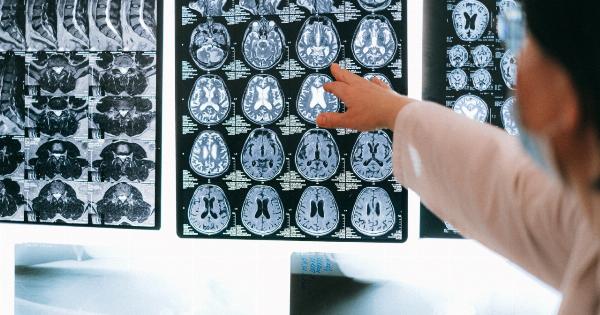Hand tremors are a common neurological condition that affect a significant number of individuals worldwide.
While most people associate hand tremors with Parkinson’s disease, there are actually several other conditions that can cause tremors in the hands. These non-Parkinsonian hand tremors can have various causes and may require different treatments. In this article, we will provide an overview of the different types of non-Parkinsonian hand tremors and their characteristics.
1. Essential Tremor
Essential tremor is the most common type of non-Parkinsonian hand tremor. It is characterized by involuntary rhythmic shaking of the hands, which can also affect other parts of the body, such as the head or voice.
Essential tremor typically worsens with movement or stress and improves with alcohol consumption. While the exact cause of essential tremor is unknown, it is believed to be related to abnormal brain signals.
2. Orthostatic Tremor
Orthostatic tremor is a rare neurological disorder characterized by high-frequency tremors that occur when standing upright. The tremors usually affect the legs and make it difficult for individuals to maintain a standing posture.
This type of tremor typically disappears when sitting or lying down. Orthostatic tremor is thought to be caused by impaired communication between the brain and the muscles.
3. Dystonic Tremor
Dystonic tremor is associated with dystonia, a movement disorder characterized by sustained muscle contractions. This type of tremor is often seen in conjunction with abnormal postures or muscle movements.
Dystonic tremor can affect various body parts, including the hands, and may worsen with voluntary actions. It is believed to arise from dysfunction in the basal ganglia, a region of the brain involved in motor control.
4. Cerebellar Tremor
Cerebellar tremor is caused by damage or dysfunction of the cerebellum, a part of the brain involved in coordinating movement.
This type of tremor is characterized by a wide, irregular shaking motion that occurs when trying to perform precise movements or maintain a particular posture. In addition to hand tremors, individuals with cerebellar tremor may also experience gait difficulties and problems with balance.
5. Psychogenic Tremor
Psychogenic tremor is a type of tremor that stems from psychological factors rather than a neurological condition. It is often associated with underlying psychological issues, such as stress, anxiety, or past trauma.
Psychogenic tremors can vary in severity and may come and go unpredictably. The tremors typically involve multiple body parts, including the hands, and may change in location or intensity over time.
6. Drug-Induced Tremors
Some medications or substances can induce hand tremors as a side effect. These tremors are often dose-dependent and may improve or resolve once the medication or substance is discontinued.
Common culprits include certain antidepressants, antipsychotics, asthma medications, and stimulants. If you suspect that your hand tremors are medication-induced, it is essential to consult with your healthcare provider.
7. Physiological Tremor
Physiological tremor is a normal tremor that everyone experiences to some extent. It is typically very fine and low amplitude, and often not visible to the naked eye.
Factors such as stress, fatigue, caffeine consumption, or low blood sugar levels can exacerbate physiological tremor and make it more noticeable. While physiological tremor is generally harmless, it can become exaggerated in certain medical conditions.
8. Peripheral Neuropathy-Associated Tremor
Peripheral neuropathy is a condition that affects the nerves, often resulting in tingling, numbness, or weakness in the extremities. In some cases, peripheral neuropathy can also cause tremors in the hands or feet.
The tremors may be accompanied by other symptoms of neuropathy, such as pain or altered sensation. Treatment of the underlying peripheral neuropathy may help alleviate the associated tremors.
9. Wilson’s Disease
Wilson’s disease is a rare genetic disorder characterized by the accumulation of copper in various organs, including the brain. When copper builds up in the basal ganglia, it can lead to tremors, among other neurological symptoms.
Wilson’s disease typically presents in adolescence or early adulthood and can cause a range of symptoms, including liver disease and psychiatric disturbances.
10. Multiple Sclerosis Tremor
Multiple sclerosis (MS) is an autoimmune disease that affects the central nervous system.
Tremors are one of the possible neurological symptoms of MS, although they are less common than other manifestations such as muscle weakness or coordination difficulties. MS tremors can vary in frequency and intensity and may occur at rest or during movement.
Conclusion
While Parkinson’s disease is a well-known cause of hand tremors, there are numerous other conditions that can also lead to tremors in the hands.
Recognizing the characteristics and underlying causes of non-Parkinsonian hand tremors is crucial for proper diagnosis and appropriate treatment. If you are experiencing hand tremors, it is important to consult with a healthcare professional who can evaluate your symptoms and determine the most suitable course of action.





























